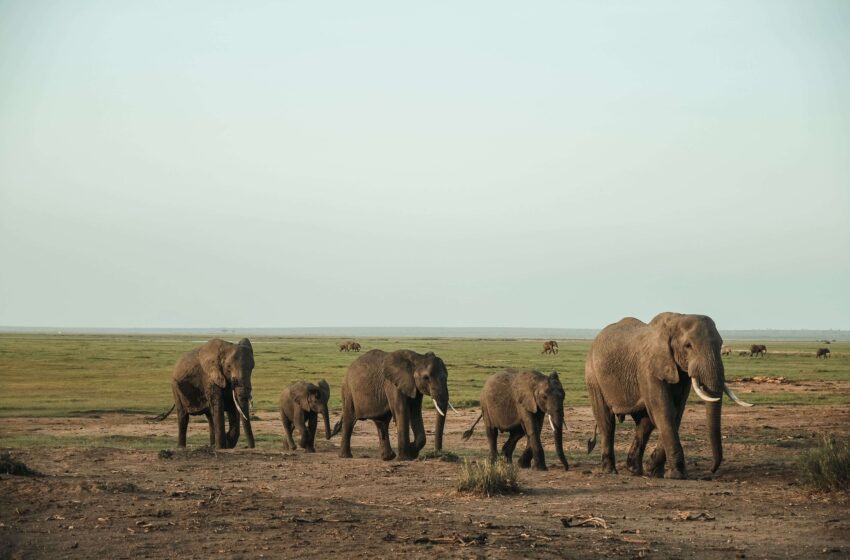
Burkina Faso’s Only Travel Guide You Need For A Great Trip in 11 Easy Steps
- Destinations Africa
Cruisit Team
- June 21, 2022
- 0
- 4717
- 76 minutes read
Burkina Faso’s Background
A Neolithic civilization has been discovered in the north of Burkina Faso from axes found on site, showing strong evidence of life going back from 5,000 BC to 10,000 BC. The oldest recorded residents of the land include the Bobo, Lobi, and Gurunsi. Then, conquering cavalry attacked the region from the south around the 15th century CE, establishing the Gurma and Mossi kingdoms in the eastern and center sections, respectively. Several Mossi kingdoms arose, the most powerful of which was that of Ouagadougou, which was located in the country’s center. The Ouagadougou Mossi kingdom, led by an emperor, the morho naba (“great lord”), resisted attempted invasions by the Songhai and Fulani empires while maintaining lucrative economic relations with key Western African trading powers like the Dyula, Hausa, and Asante.
In 1886, German adventurer Gottlob Adolf Krause toured Mossi land, and in 1888, French army commander Louis-Gustave Binger reached the morho naba. In 1895, France established a protectorate over the Yatenga kingdom, and in 1896, the French officers Paul Voulet and Charles Paul Louis Chanoine (also known as Julien Chanoine) fought the Morho naba Boukari-Koutou (Wobogo) of Mossi and subsequently overran the Gurunsi territory. The Gurma accepted French protectorate in 1897, and the French acquired the Bobo and Lobi regions that same year (though the Lobi, armed with poisoned arrows, were not effectively subdued until 1903). In 1898, an Anglo-French treaty established the border between France’s recent acquisitions and the northern territories of the Gold Coast.
The French split the area into administrative cercles (“circles”) but kept the chiefs in their customary positions, including the morho naba. Upper Senegal–Niger (as that colony was known from 1904 to 1920; presently Mali) was linked to the nation at initially, but was constituted as a distinct colony, Upper Volta (Haute-Volta), in 1919. It was partitioned in 1932 between Côte d’Ivoire, Niger, and French Sudan. Upper Volta, on the other hand, was restored in 1947 as an overseas region of the French Union, with its own territorial legislature. In 1957, the assembly was granted the authority to elect an executive council for the region, which was turned into an independent republic within the French Community by the end of 1958. When independence was declared on August 5, 1960, the new constitution allowed for a five-year term for an executive president elected by universal adult suffrage, as well as an elected Legislative Assembly.
Military coups occurred often in the 1970s and 1980s, and were followed by multiparty elections in the early 1990s. Because of Burkina Faso’s high population density and limited natural resources, the majority of its residents face bleak economic prospects. Recent turmoil in Cote d’Ivoire and northern Ghana has made it difficult for hundreds of thousands of seasonal Burkinabe farm laborers to find work in neighboring nations.
Burkina Faso, a West African country originally known as Upper Volta, is one of the continent’s lesser-known countries. That in no way reflects the cultural and ecological wonders that this small country has to offer. The Burkinabe people are persistently hospitable and fiercely proud of their cultural history, making Burkina Faso a delightful location to visit. This jewel of a nation shines as brilliantly as the smiles of its people, with mud-built mosques, troglodyte settlements, and the greatest elephant population in West Africa, and will make a lasting impact on the hearts and minds of all who visit it.
“From mud-stick buildings to the Sindou Peaks’ rugged cliffs, to the wildlife in the country’s National Parks, and the traditional melodies, the rich culture that Burkina Faso pours out is evident in their local’s warm welcomes“
The landlocked country is one of the poorest in Africa and probably the world, but, its spirit and natural beauty more than compensate for its lack of resources. The list of “must-see” locations may be narrower than in many other African countries, but the people here will greet guests with warmth and charm and will strive to make their stay unforgettable. Burkina Faso is limited to the north and west by Mali; to the northeast by Niger; to the southeast by Benin; and to the south by Côte d’Ivoire, Ghana, and Togo.
Muslims constitute more than half of the population. One-fifth of Burkinabé are Roman Catholic, while one-sixth practice indigenous faiths. The majority of the remaining people are Protestant or non-religious. The Roman Catholic archbishopric is headquartered in Ouagadougou, and the nation is divided into many bishoprics.
The natural vistas of Burkina Faso, from the craggy outcrops of the Sindou Peaks to the numerous fauna discovered in Lake Tengrela or any of the country’s national parks, are without a doubt the major draw.
Burkina Faso’s cities may not have many sites or tourist attractions, but the music and other types of performing arts on offer are undoubtedly some of the best in Africa.
The tourism sector has not really taken off in the country, thus the facilities can be a little rough and ready, and tourists will need to prepare a little more than in more tourist-oriented African countries. However, the lack of visitors is not always a negative thing, as some of the places you will visit have a very untouched air to them, and the family-run guesthouses seem quite private and welcoming.
To make sense of why it hasn’t developed much, other than the obvious unrest and lack of resources, it also has to do with the lack of the only thing remaining that can uplift the country, and that is tourism income. Burkina Faso moved from hardly receiving annual tourists of about 300,000 visitors in 2007, then plummeted to being one of the least visited countries, with just over 67,000 visitors each year.
This country should be on everyone’s bucket list, but the present security situation means that extraordinary adventures will have to wait. The country may not have many big-ticket attractions, but the hospitality and kindness of the Burkinabé people are unparalleled. When it is safe to travel again, you will be met with a warm bonne arrivée, local curiosity, and a handshake.
Burkina Faso also has a thriving cultural scene. Burkina’s two largest and most fabulously named cities, Ouagadougou and Bobo-Dioulasso, are recognized for their musical traditions and gorgeous handicrafts.
International tourism is quite limited, but the actual treasures of Burkina Faso are outside of the cities: the enchanting beauty of the landscapes—from rolling savannah and startling geology to the entrancing painted cottages at Tiébélé—and the Burkinabé’s distinctive culture and genuine hospitality. It sure is a country you want to consider giving a chance.
If you want to know more about traveling to Burkina Faso, things to see and do: How to travel the roads, and where to go? Read ahead for a detailed travel guide.
- Take Gorom Gorom camel rides.
- Visit the African film capital of Ouagadougou.
- Learn about Manega and the fascinating ethnological museum.
- In Bobo Dioulasso, you will see a Sudanese-style mosque, colonial architecture, handicrafts, and music.
- Banfora sightseeing: rocks, waterfalls, and hippos
- Look at the jaw-dropping granite formations in Sindou Peaks.
- Loropeni and its magical Pre-European stone ruin
- Witnes Gaoua’s Lobi Animistic Culture
- Visit Nazinga Ranch to see elephants.
- Tiébélé’s fortress-like decorated residences
- Get ideal leisure in the beautiful surroundings of Lac Kompienga.
- Like much of West Africa, French is the most frequently spoken language in Burkina Faso. Moore, Dioula, and Fulfulde are the most often spoken languages in more rural areas of the country. English is not frequently spoken because there are over 70 ethnic languages.
- Burkina Faso values music, and various festivals are conducted throughout the year to commemorate the country’s legacy.
- Although ATMs are available in most major cities in Burkina Faso, cash is still the preferred option.
- Kidnapping is a major issue in Burkina Faso, which is located in the Sahel region.
- Put cash in your pocket or a cross-bag. Do not display your money in public.
- Because this country lacks tourism infrastructure, has undergone civil unrest, and has a high crime rate, it is suggested that you travel with a tour operator.
- Because Burkina Faso is a conservative country, dress modestly from the shoulders to the knees. Bring a lightweight scarf or pashmina to drape across your shoulders to keep the sun off your shoulders.
- Burkina Faso is one of the poorest countries in the world, yet distributing money or gifts indiscriminately is not the answer—it encourages begging and harassment of tourists, and it can breed enmity in communities.
- In Burkina Faso, haggling is a way of life, so walk into the marketplaces and bargain like a Burkinabé.
- Burkina Faso has generally been a stable and peaceful country, at least in the past, but the northern areas, in particular, are facing upheaval. Many nations warn against traveling to the Sahel area due to security concerns in Mali. Your tour operator will be aware of any changes and will know which areas are safe to visit. Travel advisories may void your trip insurance; your holiday provider will notify you on this.
Crime & Scams in Burkina Faso
Burkina Faso has been plagued by periodic droughts and military coups. Many governments have spread alerts advising against travel to the northern region near Mali and Niger. Among the places to avoid are also the provinces of Gourma, Kompienga, and Tapoa in the southeast, which includes Arly and W National Parks. The East and Sahel regions, the western provinces of Kossi and Sourou, the central-eastern province of Koulpélogo, the western province of Kénédougou, and the northern province of Lorum are all in a state of emergency.
Terrorism, crime, including petty crime, and kidnapping are the most common threats in Burkina Faso, particularly in these regions. Curfews are in place in numerous areas. If you breach the curfew, you might face serious repercussions. Terrorist organizations continue to prepare for attacks in Burkina Faso, and they may carry out strikes anywhere, at any time, with little or no warning, killing people, including children. The rights to education and health were compromised in the setting of the conflict, and cases of sexual assault were reported. Impunity for horrific human rights violations and atrocities continues.
Security dangers increase at night. As a result, never travel alone, especially after dark. If you are caught up in a frenzy, seek refuge in a safe place, avoid large crowds and rallies, and keep an eye on the news. Take responsibility for your own safety. Follow the advice of the local authorities. Expect barricades and large crowds in central Ouagadougou and surrounding areas. Traveling by automobile is risky. Never, ever drive at night. Also, avoid utilizing public transit due to the increased risk of crime. If you are insistent on traveling, at the very least seek security specialists to ensure your trip is as secure as possible. Don’t try to travel to Burkina Faso independently, and be sure you always stay with your tour operator.
Healthcare in Burkina Faso While Traveling
Although the bulk of hospitals in Burkina Faso are located in bigger cities, the government has boosted the number of rural clinics to improve access to basic health care. The top causes of death in Burkina Faso are lower respiratory ailments, malaria, and diarrheal diseases. The government has focused on AIDS prevention and treatment. Droughts have worsened malnutrition and related illnesses, especially among young children and pregnant women. Medical facilities are insufficient, and emergency services are few. Even in an emergency, you may be asked to pay in cash. You will need medical evacuation if you are seriously ill or injured. Check that you have enough insurance and finances to cover all of your expenses.
Make sure you are up to date on all standard vaccines before every trip. Chickenpox (Varicella), diphtheria-tetanus-pertussis (DTP), influenza (flu), measles-mumps-rubella (MMR), polio, and shingles are among the most commonly prescribed vaccinations worldwide. Insect-borne illnesses such as yellow fever and malaria are widespread. Check that your lodging is insect-proof. Apply insect repellant. Everyone should receive their poliovirus vaccinations on time, before visiting any high-risk location,
When visiting Burkina Faso, you are not required to purchase travel medical insurance. However, it is always important to have comprehensive medical coverage when traveling because you never know what you could encounter while overseas.
Burkina Faso has two distinct seasons with two transitional periods. One season is humid, hot, and sunny all year and the other which comes with harmattan bringing drier and cooler weather.
The country is almost humid all year, the northern Sahelian zone is characterized by semiarid steppe, receiving less frequent rains, and is prone to droughts. To the south, in the Sudanic zone, the climate becomes more tropical wet-dry, with more temperature and rainfall fluctuation and total rainfall than in the north.
Shoulder Season
Summer is considered a shoulder season in Burkina Faso which lasts from mid-February to early June, when the country experiences a heat wave, particularly from late April to mid-May, with temperatures topping 40°C (104°F) and dry weather due to the Sahara’s constant Harmattan winds. In comparison to the prior months, the temperature begins to fall in June. Burkina Faso celebrates this time of year with mask celebrations occurring in late February to early March on even-numbered years.
Another transitional period with milder weather occurs from September to mid-November, with highs of up to 33°C and lows of 22°C. During this time, the rainy season ends in September, making it a reasonable option for a visit.
High (Peak) Season
If Burkina Faso had a high tourist season (peak season), it would likely be in this period from late October to March, with late October to December being the best time to visit and resemble spring. During this period, the Harmattan, which is from November to May, turns Burkina Faso into a dusty gust, bringing in cooler weather with less humidity. It is the most pleasant weather because it doesn’t get sticky. The average temperature at this time is around 24°C and slips to 16°C at night. However, if you have allergies, avoid this period as dust makes it more challenging for people with allergies.
Off-Season
The rainy season in Burkina Faso lasts from late May to mid-September and is often hot and humid, with heavy rain falling mostly between June and September. Travel to Burkina Faso during the wet season is not ideal, but if you return shortly after, you will find a revived landscape – and people. May and June are hotter, with July and September temperatures decreasing to highs of 30°C to 28°C and lows of approximately 22°C. Overall, because to reduced rainfall, this season is shorter in the northern portions of the country.
By Plane
There are 50 direct flights from Burkina Faso’s capital to Ouagadougou Airport. The cheapest flights to the country are from nearby African and European nations. Roundtrip economy flights start at $410 and may cost more than $4,000 from remote locations.
By Car
Burkina Faso shares borders with Mali, Côte d’Ivoire, Ghana, Togo, Benin, and Niger. Border crossings through checkpoints are not encouraged in Africa, particularly in Central and Western parts of the continent. As a result of war spillover from the Sahel region, the northern districts of Burkina Faso, which border Mali and Niger, are particularly susceptible to danger. If you’re coming from that direction, we recommend taking a flight. You may, however, go from Mali to Burkina Faso through Doula Diassa from the western borders.
By Bus
There are practically daily buses from Bamako, Mali to Ouagadougou, Burkina Faso run by TCV, Gana, and Nour. The stations, however, vary, so do your homework and ask questions before visiting a station. STM Voyageurs operates a flight from Abidjan, Ivory Coast, to Ouagadougou, Burkina Faso. From Accra, Ghana to Ouagadougou, Burkina Faso, there are two operators. One option is to change from Paga at the border to Intercity STC Coaches and then take the Rakieta bus to Ouagadougou. The alternative option is a direct route provided by Intercity STC Coaches, although it is a lengthier journey. TCV also runs three excursions every week from Lome, Togo, to the capital of Burkina Faso.
TCV also runs a daily service from Benin’s Cotonou to Burkina Faso’s capital. STM Voyageurs runs a daily bus from Niamey, Niger, to the capital of Burkina Faso. The lowest time of a trip from any of the nations is 9 hours from Niger and up to 18 hours from Ivory Coast. A one-way ticket costs between $25 and $75. It is not recommended to go by public bus, however, this information is for those who want to break the rules and ignore safety warnings.
By Plane
Burkina Faso has two international airports, one in Ouagadougou and one in Bobo-Dioulasso, as well as 15 airfields in the country’s interior. Domestic flights are solely handled by Air Burkina. Air Burkina Faso flies twice a week from Ouagadougou to Bobo-Dioulasso, as well as to the capitals of neighboring nations.
By Train
If you have lots of time and want to appreciate the scenery, taking the train from Ouagadougou to Bobo-Dioulasso is advised. If you’re on a tight schedule, take the bus or a cab instead of the rail, which takes a lengthier route via Côte d’Ivoire’s palm-fringed beaches.
Burkina Faso has a 1,260-kilometer-long train line that connects Ouagadougou in Burkina Faso to Abidjan in Côte d’Ivoire through Koudougou, Bobo-Dioulasso, and Banfora. The Société Internationale de Transport SITARAIL manages and maintains the railway network. Fares vary depending on the class selected. The first class compartment is air conditioned. Every year, the railway transports around 910,000 tons of cargo and 300,000 people, and significant investments are being made to develop the train network.
By Car
Renting a car is an option, but cars are frequently in bad condition. It is advised that you lease an automobile for at least a day or two before signing a lengthier term so that you can assess the quality before committing. Rental cars are frequently accessible from hotels in Ouagadougou through international suppliers. Several main metropolitan and intercity highways are paved, although paved roads are scarce elsewhere in the nation. Despite being paved, they are riddled with massive potholes and can be quite narrow. Some of the so-called “potholes” are more akin to miniature craters, putting an abrupt stop to your car’s journey. Other cars on the road can be highly irresponsible, and head-on incidents are not uncommon.
By Taxi
Taxis are the best method to move about Burkina Faso’s cities, and cabs are plentiful in many regions. But, prepare to share a trip with strangers, in fact, if it’s a green car, you’ll have to ride with as many people as the taxi can hold. Fares are quite low, although drivers do charge foreigners more, particularly if you have a large amount of additional luggage. Prices also triple at night, although they are still negotiable, especially if you have a large group to share the journey with. White taxis are more costly and private, but if you want comfort and dependability, they’re the way to go. In Ouagadougou, there are several taxi firms. Burkina Faso’s cities are naturally provided with taxis, which remain the most practical and widely utilized mode of transportation in the country. Taxis transport many people in the same direction. To avoid unpleasant surprises, the fee is agreed upon prior to departure and varies depending on distance and area.
The universal taxi-brousse is also present in Burkina Faso and is the mode of transportation most commonly utilized by residents to link different sections of the nation, but only on local or urban routes. The taxi- brousse, like the communal taxi, only begins when all seats are full, making scheduling somewhat erratic.
Motorbike taxis, also known as “zémidjans,” are the primary mode of transportation in various Burkinabe cities. Motorbike taxis may also be available in big cities and are popular with certain low-income consumers since they provide speedy and inexpensive transportation.
By Bus
The bus is the cheapest mode of transportation in Burkina Faso. Lines service key towns, and journeys between Ouagadouga, Bobo, Banfora, and Gaoua are accessible on a regular basis. Except in rural areas, the roads are quite smooth. Even wealthier locals would rather take the bus than drive lengthy distances. Burkina Faso offers huge, contemporary buses that provide passengers with comfort. The network is highly broad and simple to use. Every bus company has their own bus terminal. Other bus stops have also been built along the highway. Every major city in the country has at least one bus operator that serves Ouagadougou and other Burkinabe cities on a regular basis.
SIM Cards & Calls in Burkina Faso
Burkina Faso has three providers, with Telecel Faso, Onatel (Telmob), and Orange competing to be the country’s largest. Although mobile phone coverage in the nation is great and inexpensive, internet speeds can be poor, and 3G is still confined to big cities. Because coverage varies across the countryside and cross-network prices are higher, many locals have two or three SIM cards. When purchasing a SIM card, bring a valid ID document (such as a passport) for registration, as registration became necessary in 2012. Hawkers sell scratch cards for top-ups on every street corner. Data alone packages of 1 GB cost 2500 CFA (about 4 USD) for all operators with a 30-day validity period. Since 2019, Orange has had the most subscribers and coverage, including some 4G coverage. Onatel (previously Telemob) is the second-largest and has been offering 4G service since 2019. Telecel is the smallest carrier, with limited coverage and just 3G.
You also have the option of purchasing a prepaid eSim card like from Airalo, SimCorner, or Nomad. The companies provide data-only plans to put on a phone that is eSim ready, so make sure your phone is compatible. It is also possible to opt-in for a WiFi Hotspot from Solis. Check before you travel because they service certain destinations. Airalo by far has the most coverage of almost 180 countries.
Local Internet & WiFi in Burkina Faso
In January 2021, internet penetration in Burkina Faso was 25.7 percent. Mobile download speeds are roughly 16 Mbps, while fixed broadband download rates are around 32 Mbps. This makes it somewhat sluggish, yet it is still valuable to have. Some hotels, hostels, and flats may have internet access as part of the room rate.
Top Places in Burkina Faso
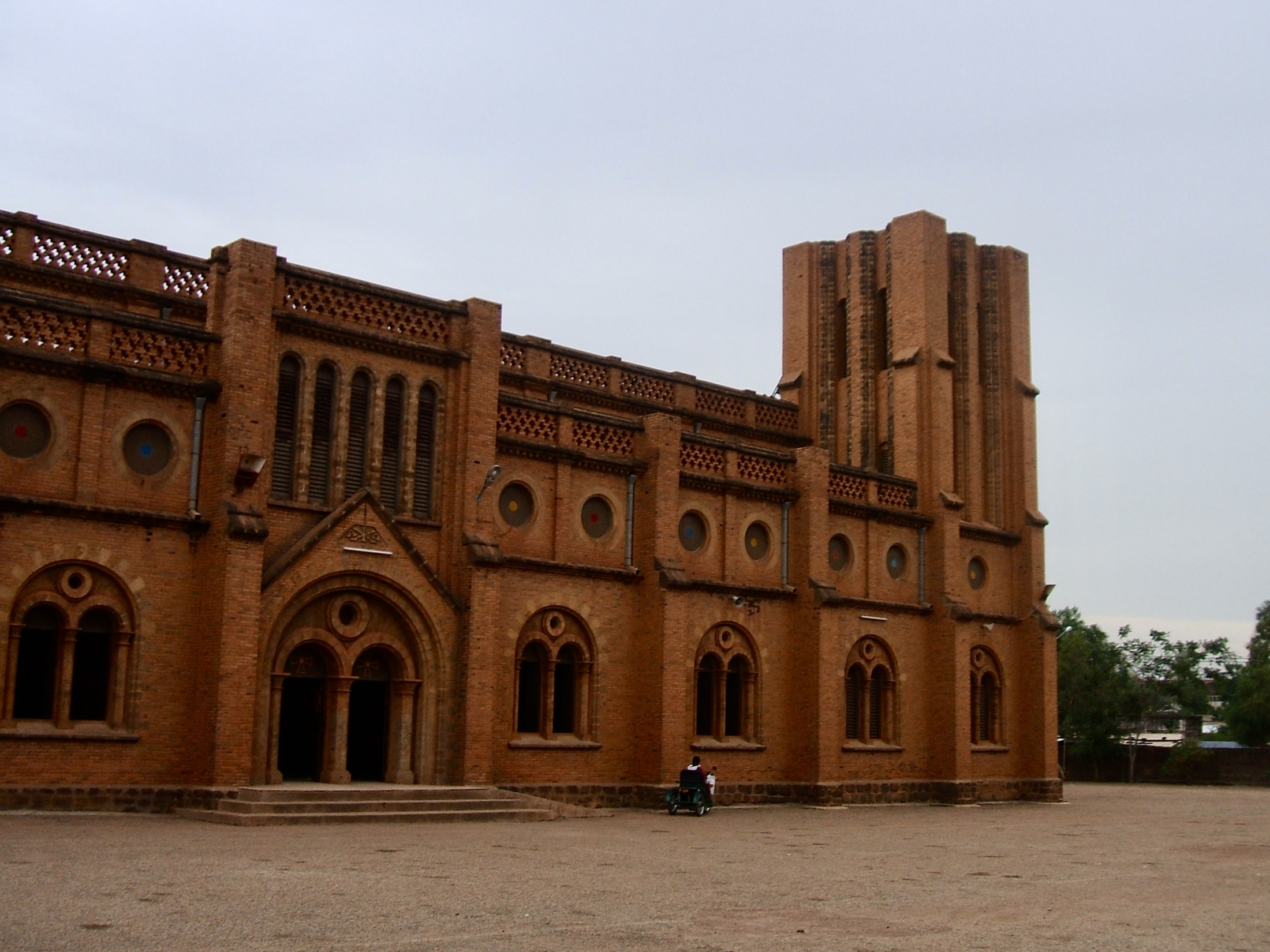
Ouagadougou Cathedral
The Cathedral of the Immaculate Conception of Ouagadougou, or Ouagadougou Cathedral, is the cathedral of the Roman Catholic Archdiocese of Ouagadougou in Ouagadougou, the capital of Burkina Faso. It was erected during the French North Africa period in the 1930s by apostolic vicar Joanny Thévenoud of the White Fathers and consecrated on January 19, 1936, following a two-year building period. Behind the cathedral, near the parking lot, is a Mary altar, Ave Maria, with a figure of the Virgin in a carved stone arch.
W National Park
This prominent ecotourism site in eastern Burkina Faso gets its name from the curve of the Niger River in the park’s northern end. The W National Park, also known as the W Regional Park, is a huge West African national park based on a meander in the River Niger. The park is managed by three governments and encompasses three countries: Niger, Benin, and Burkina Faso. The tourism infrastructure of Burkina Faso is fairly basic, and camping overnight is the ideal way to see the country. Though the safari experience isn’t as pleasant as it is in the vast East African game reserves, you’re sure to witness many beautiful wildlife up close and in their natural habitat. W National Park is home to elephants, lions, cheetahs, hippopotamuses, buffalo, antelope, and hundreds of bird species.
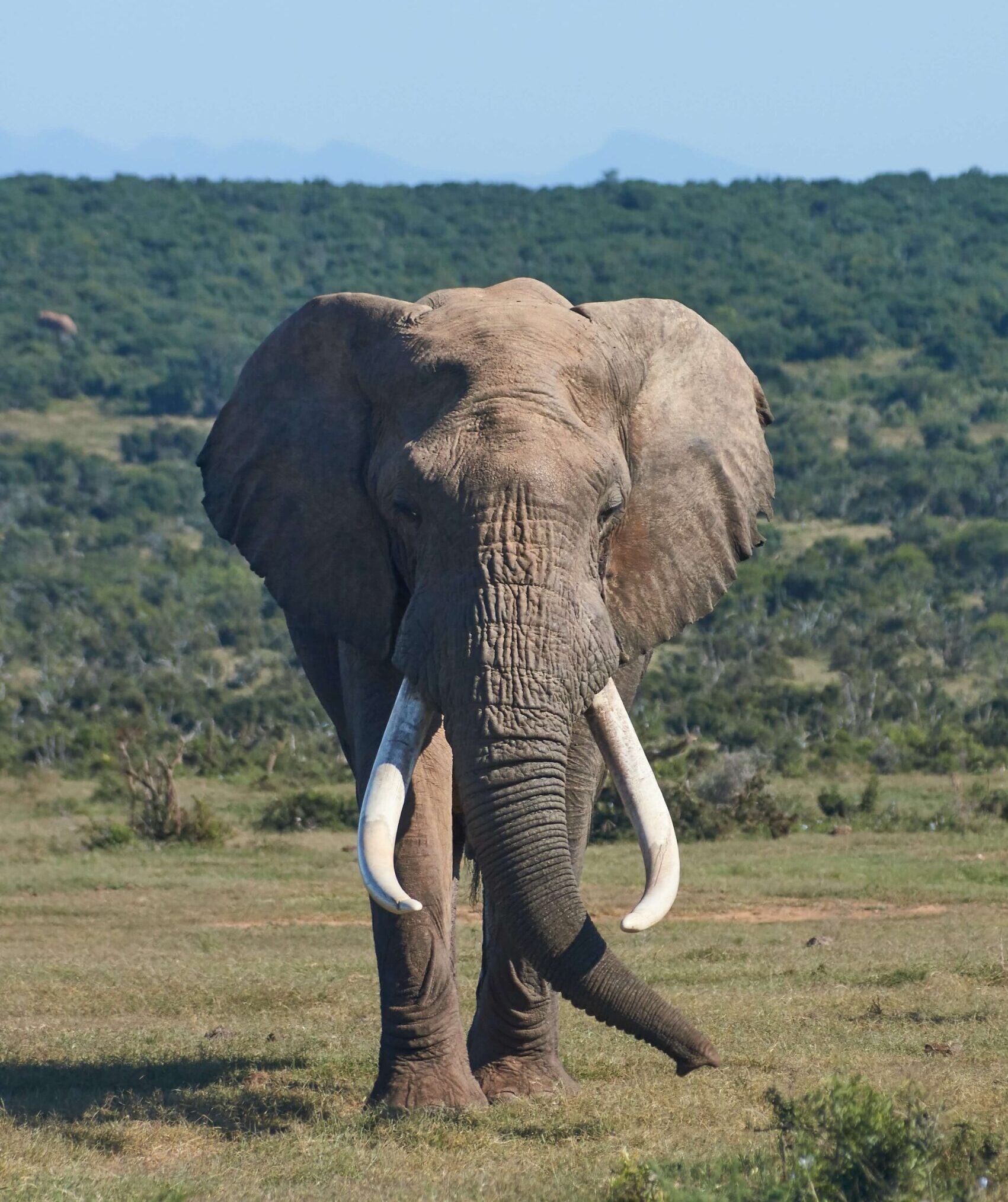

Grande Mosquée de Bobo-Dioulasso
The Bobo-Dioulasso Grand Mosque is a mosque in Bobo-Dioulasso, Houet Province, Hauts-Bassins Region, Burkina Faso. This mosque, built in 1893, is an excellent example of Sahel-style mud building, with conical towers and wooden struts that both support the structure and serve as scaffolding for replastering works. Visits take you inside the building and onto the top terrace, where you can see the towers from a new angle.
Loropéni Ruins
The Loropéni ruins are a medieval historical site located in southern Burkina Faso. It’s the remnants of a fortified hamlet about which little is known. In 2009, they were included on the UNESCO World Heritage List. The 11,130-square-metre site contains an array of stone walls that constituted a medieval stronghold. The Lohron or Kulango people populated the village, which profited through the trans-Saharan gold trade, reaching its peak between the 14th and 17th centuries AD. It was discontinued in the early nineteenth century.


Karfiguela Waterfalls
This is a collection of waterfalls near Banfora that are spectacular during the rainy season. The location is best visited near the conclusion of the rainy season, when the falls are at their peak. It is also the most visited natural attraction in the whole country.
7-day Itinerary in Burkina Faso (with extension options)
Days 1 and 2
Arrive at Ouagadougou
Burkina Faso’s capital city, a busy metropolis with a modern West African atmosphere, serves as the country’s political and cultural center. Ouaga is home to the FESPACO and SIAO festivals, as well as theater, fine arts, music, and literature. You will Arrive at Ouagadougou International Airport, if you’ve taken our advice, you will be meeting your guide and head to your accommodation. A sightseeing tour of Ouagadougou, Burkina Faso’s sophisticated and bustling city is what you will begin with in your Burkina Faso itinerary.
Explore the colorful Grand Marché, pay a visit to the unequaled Musée de la Musique (Music Museum), or catch a Burkinabe film at one of Ouaga’s many theatres. Despite the dirt and overcrowding, the ethos of Ouaga is distinctly Burkinabe.

Visit a cathedral from the 1930s and a classic lost-wax bronze studio. Discover an outdoor gallery where artists from all over the globe have carved gigantic sculptures from chunks of granite at Laongo Sculpture Park, as well as the adjoining Opera Village, an arts education initiative created by the legendary film director Christoph Schlingensief. In the afternoon, visit the Manega Museum, which is located in a rural setting approximately 50 kilometers north of Ouagadougou and has one of the country’s outstanding ethnological collections.

- Backpacker: Hotel de la Liberte, Hote Kavana, Hotel OK Inn
- Budget: Vila Tenko, Residence Salta, Residence Auberge Le Caïlcédrat
- Mid-range: Hotel Lwili, Le Nomade B&B, Le Grand Calao, Les Palmiers Hotel
- Luxury: Hotel L’Hacienda, Palace hotel, Hotel Palm Beach, Hotel Ouaga Beach, Splendid Hotel, Sopatel Silmande Hotel, Bravia Hotel Ouagadougou, Lancaster Ouaga
This section will be added shortly.
Day 3
Off to Bobo Dioulasso
After breakfast, go to the Village Artisanal, an artisan center on the city’s outskirts dedicated to the skill and craftsmanship of hundreds of local craftsmen.
Depart Ouagadougou and its welcoming people for Bobo Dioulasso. The second-largest city in Burkina Faso, known simply as “Bobo” by most Burkinabe and visitors, is also a booming cultural hub, attracting singers and artists from all across Burkina and neighboring countries. Every other year in March, over a thousand artists and musicians attend the Semaine Nationale de la Culture (National Culture Week), which emphasizes and fosters the nation’s lively way of life. Bobo has lovely tree-lined alleys, shaded courtyards, and creeping bougainvillea.

The route to Bobo Dioulasso is bordered with bizarre-looking baobab trees and massive mango trees. Cross the Mahoun, or Black Volta, one of West Africa’s major rivers, at Boromo. Arrive in the late afternoon at Bobo Dioulasso. There may be time to see the vibrant central market, the Catholic church, and the railway station, which is a magnificent example of French colonial architecture. Take a tour of the Sudanese-style Grand Mosque, built in 1880; stroll through Marché Central, where shops sell jewelry, handicraft, apparel, and meals under canvas shades; visit the Musée Houet, which houses artifacts and crafts from the city’s past; and enjoy an evening performance by local musicians in a maquis, West Africa’s equivalent of a nightclub. Bobo is attractive and timeless, and it is a must-see for anybody traveling to Burkina Faso.

- Budget: Villa Bobo
- Mid-range: Hotel L’Auberge
This section will be added shortly.

Day 4
Explore Bobo more, then head to Banfora
This morning you discover the town’s famous mud-stick Grand Mosque and its old quarters before departing to Banfora, which you will reach after one and a half hours. Upon arrival, you will explore the stunning surroundings of this town set in beautiful scenery of sugar-cane fields and tree-lined hills. Explore the magnificent rock formations of the Dômes de Fabédougou and the picturesque Karfiguela waterfalls (100 km).
Banfora, the second-largest town in the country’s southwest, has the beauty of a little village. On weekends, merchants from all across the region go to Banfora’s market. Hire a guide to take you to Karfiguéla Falls, where you may swim in the pools above the falls. Then, take a short stroll to the Fabédougou Domes, which are towering, eroded granite boulders that resemble mushrooms.
- Budget: Hotel Cascades Palace
- Mid-range: Hotel Canne à Sucre
This section will be added shortly.
Day 5
A day trip to Sindou
Banfora Day trip to Sindou, which is accessed through a renovated road that you will follow for about 50 kilometers from Banfora. The location is famous for its jagged chain of castle-like rock structures, which were left behind after the surrounding softer rocks crumbled. Spend 3 to 4 hours strolling around this peaceful rock beauty. In the afternoon, boatmen take us out on Lake Tengrela, a popular area for hippo and bird watching (100 km).

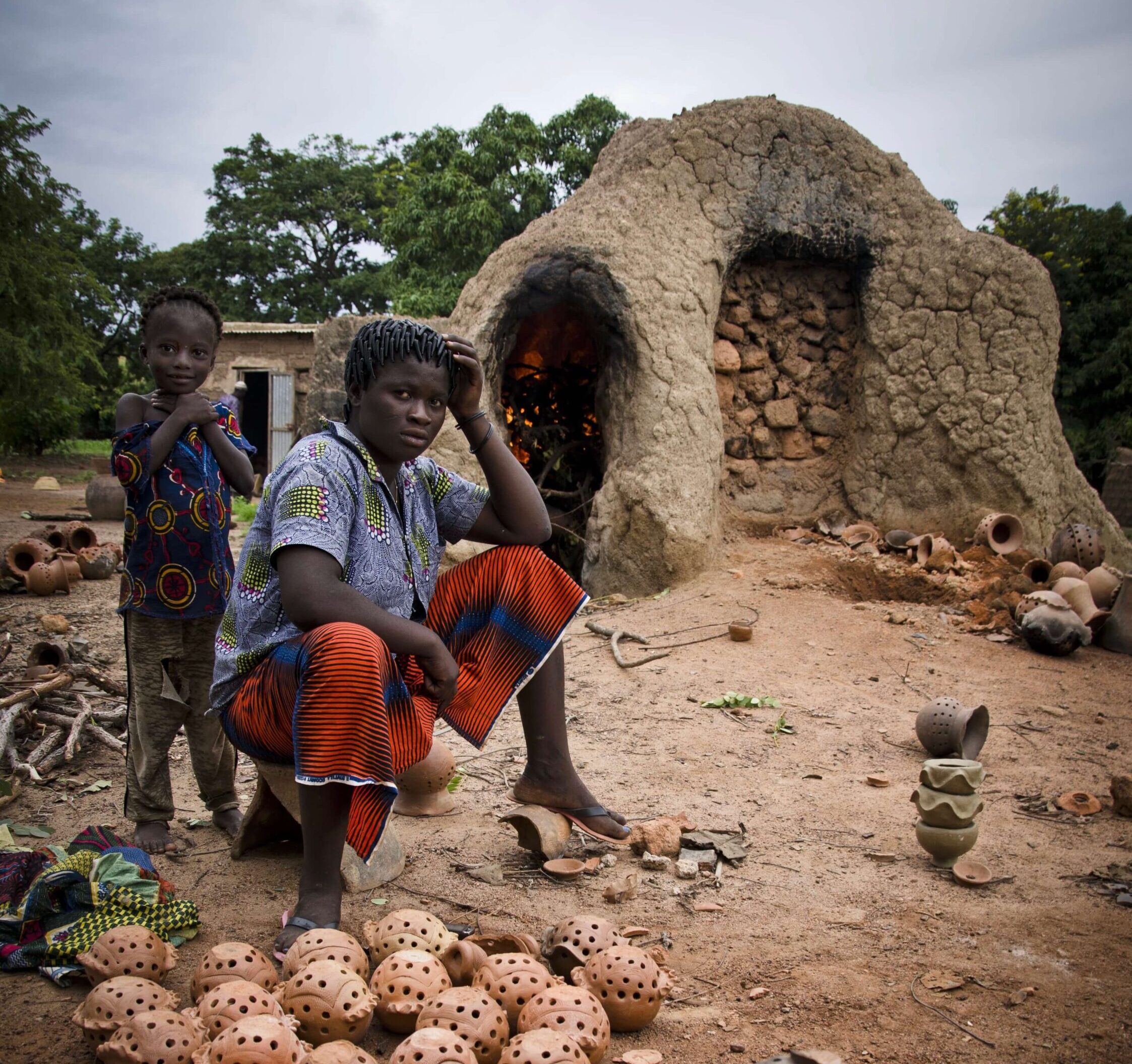
Day 6
Off to Gaoua
Head east to Gaoua and arrive in the territory of the Lobi, where you will spend the day with a native guide learning more about this tribe’s very animistic culture. Explore the enigmatic Loropeni ruins, a UNESCO World Heritage site since 2009. You will also spend time in a Lobi community, where you will meet the people and examine their fortress-like dwellings. Enter the secret and holy realm of a féticheur, a traditional healer, in the little town of Kouekouera. Get one last look at Lobi before checking into the hotel.
Day 7+
Depart or Continue to Nazinga Ranch
This is your final day, or you can opt to continue the journey. After breakfast, you will go to Ouagadougou and then to the airport, depending on the time of your departure.
You might also want to continue the journey by leaving Lobi and heading north-east to Nazinga Ranch, which provides excellent opportunities to observe elephants up close. This little park is home to 39 animals, including buffalo, several antelope species, warthogs, and primates such as red monkeys and baboons. Walking with caution is permitted in the park, and late afternoon is the greatest time to monitor wildlife and capture wonderful photos.
In about 4 to 5 hours you will reach Nazinga Ranch from Gaoua, the best place in Burkina Faso, and maybe all of West Africa, to see elephants, antelope, monkeys, baboons, crocodiles, and warthogs. The reserve was established in the 1970s by two Canadian brothers who were concerned about the survival of Burkina’s protected species at the hands of poachers. Overnight visitors can stay at a camp that includes bungalows, apartments, and a dormitory.
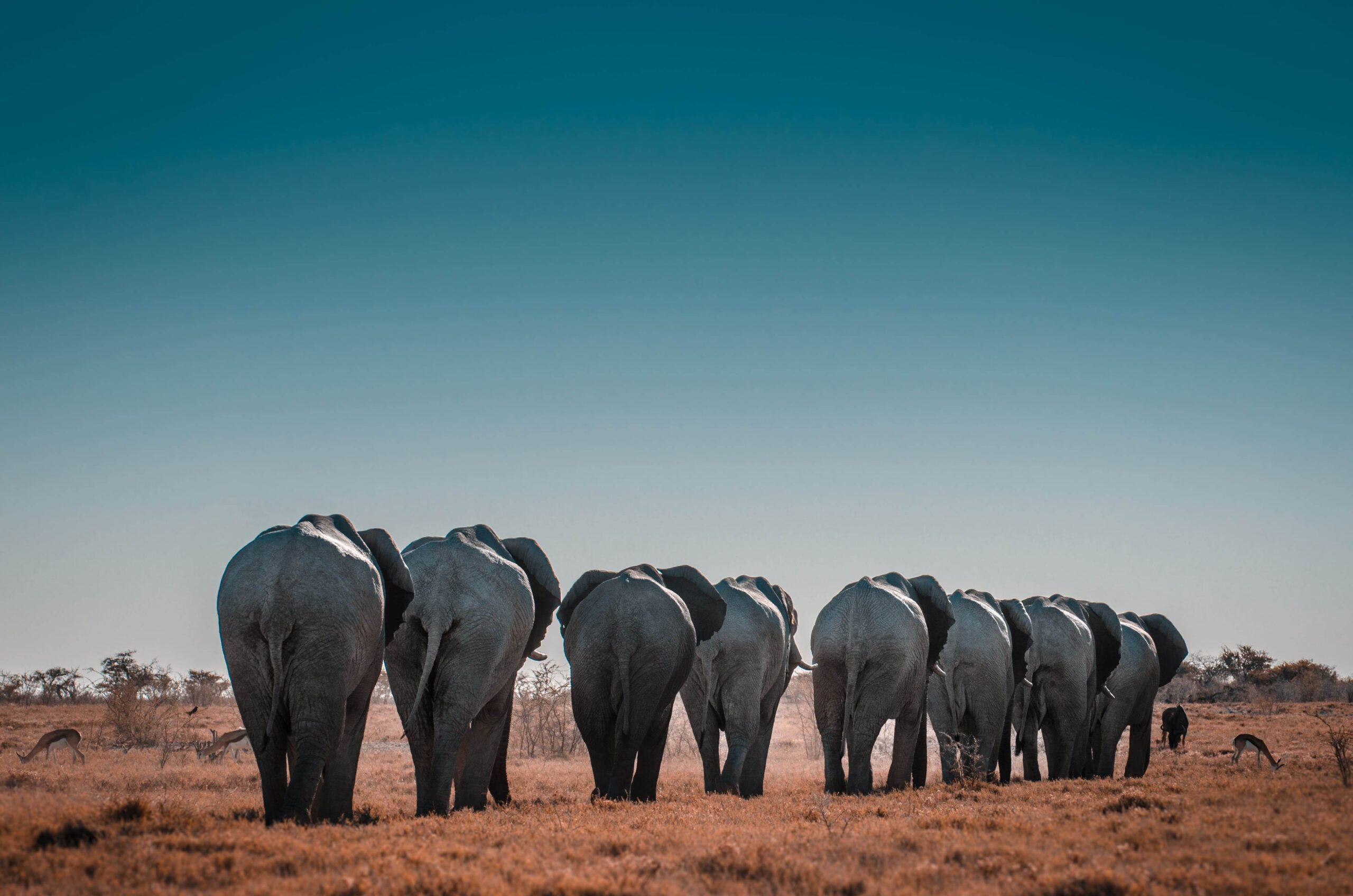

- Budget: Ranch de Nazinga
This section will be added shortly.
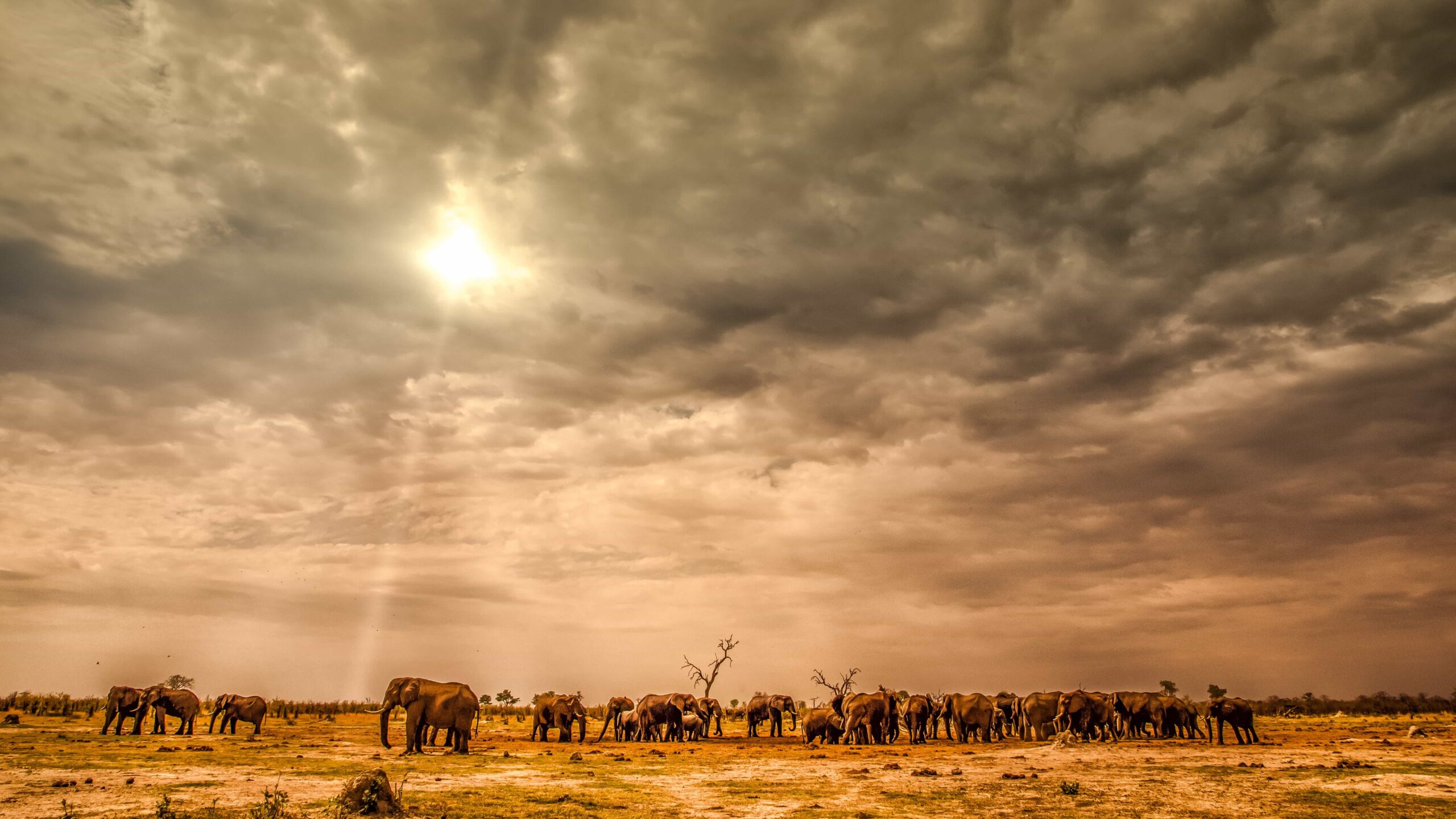
Day 8
More Nazinga, Tiebélé, then Ouagadougou
Get up early for a morning game drive to see elephants and other wildlife, then return to the ranch for a hearty breakfast. Next, travel through farmlands and beautiful forest savannahs to Tiebéle, a Kassena town known for its fortress-like, windowless dwellings. Visit the Royal Court, which has been adorned by the Kassena ladies in geometrical designs of red, black, and white. You will stay overnight at your choice of the accommodation’s suggested in Ouagadougou.
Day 9 and 10
Lake Kompienga
Your journey will next lead you to the vast, sparsely inhabited plains of eastern Burkina. The landscape is arid and Sahelian, with forested savannah, elephant grass, and scattered mud hut communities inhabited mostly by the Gourmantché ethnic group. Go to one of their huge family compounds if time allows. Near the border of Benin, after going through Pama, arrive at the charming and magnificent Lake Kompienga, your destination for the next day. A boat will transport you to your lodge on a little island in the lake.
Spend the next day as you like. Choose a hotel providing views of the lake and surrounding forest, which will make it an ideal spot to recharge your batteries. With luck, you’ll see several elephants, which frequently visit the lake to drink and wash. Don’t miss out on a boat trip across the lake in the afternoon. The Oualé River is dammed near the border with Benin in the hamlet of Kompienga. The enormous hydroelectric station here provides the majority of the capital’s power.
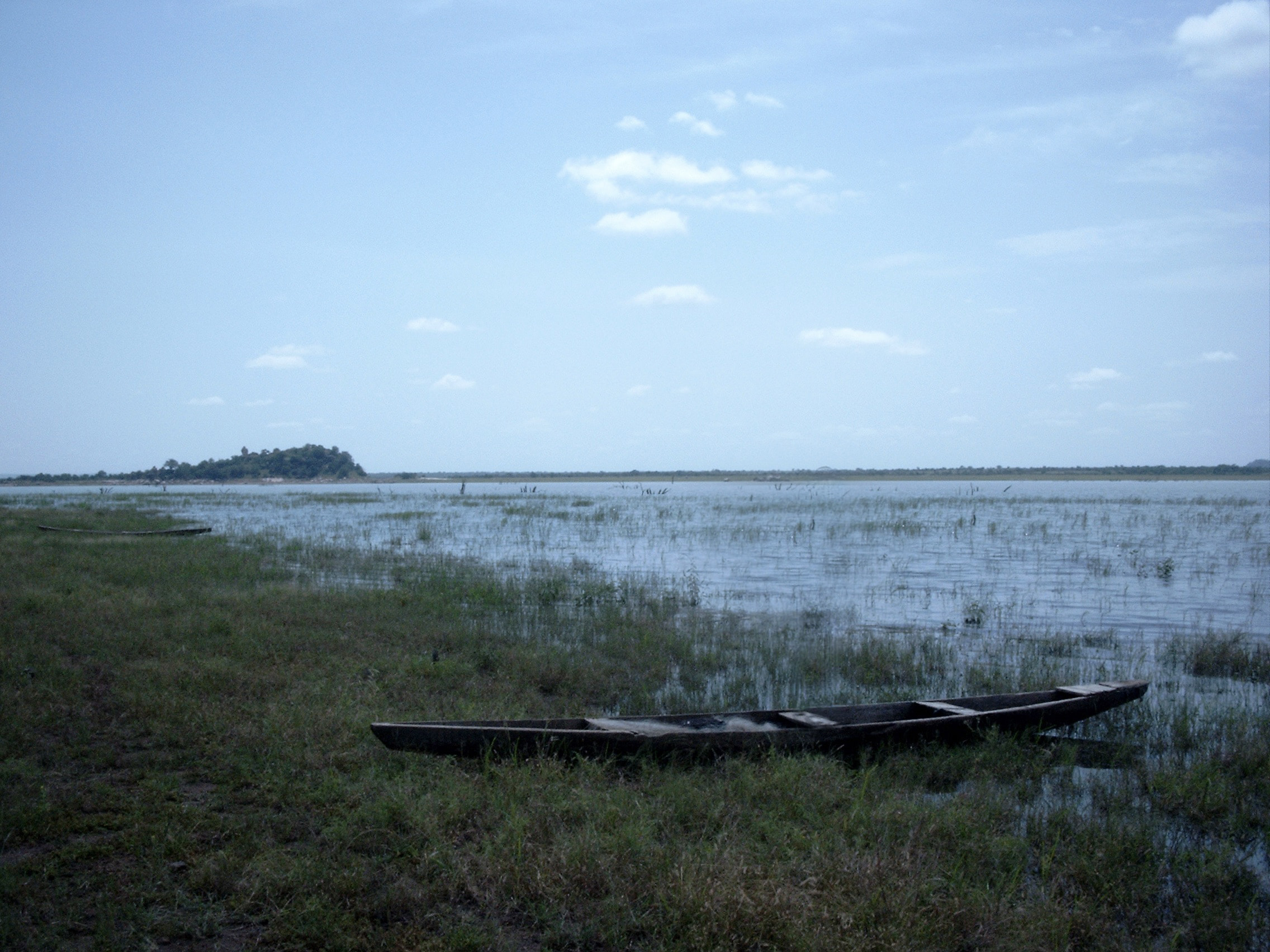

- Budget: Hotel Thialy
This section will be added shortly.

Day 11
From Kompienga, Depart from Ouagadougou
On your final day, return to Ouagadougou. Stop at Fada N’Gourma to explore the “Miel de Gourma” initiative, where Madame Mariam describes how apiculture is practiced in the Gourmantché community. You will arrive in Ouagadougou in the afternoon and will have time to rest in a day room. Transfer to the airport and return flight in the evening.
The Most Popular Food in Burkina Faso
The cuisine in Burkina Faso, Burkinabé cuisine, is comparable to that of the rest of West Africa. Sorghum, millet, rice, maize, peanuts, potatoes, beans, yams, and okra are the key mainstays. Mutton, beef, goat, and fish are the most popular meats available, and they are all often grilled. The capital city has the widest variety of restaurants, however most cities and towns have a few decent eateries as well. Don’t be shocked if not every item on the menu is ready. Instead, inquire about what is available and then place your purchase from that list.

Fufu
This is a West African staple. It’s produced from root vegetables that have been cooked in water and then mashed into a paste. Fufu is often eaten with your hands in the form of balls that are dipped in a dipping sauce or soup.
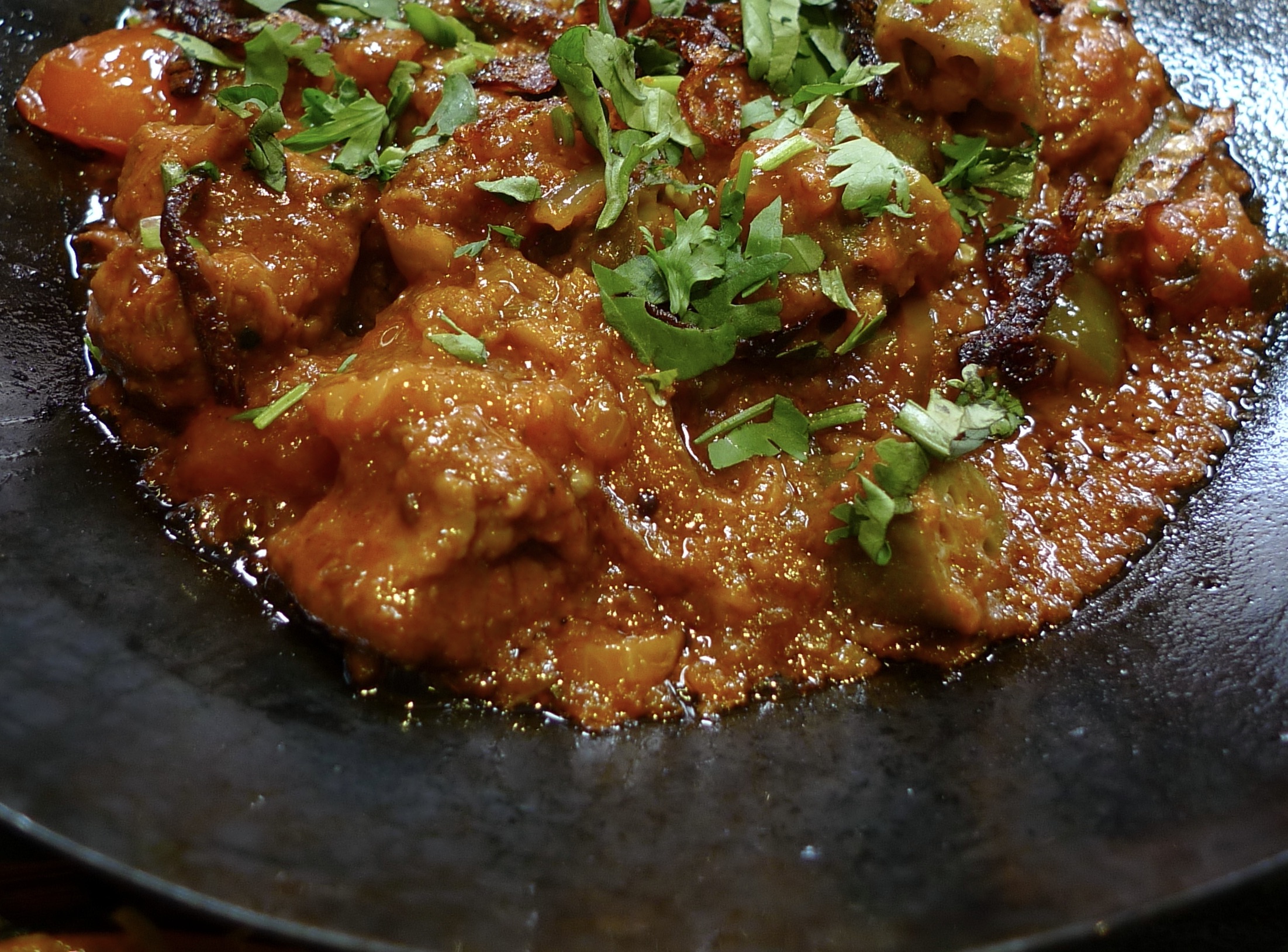
Sauce Gombo
Okra, also known as ‘gombo’ in several African languages, is a vegetable used as a thickening agent. Burkinabé and other West African cooks utilize it as the foundation for a variety of soups and stews, which are typically served with stiff porridge made of cassava, millet, or maize flour.
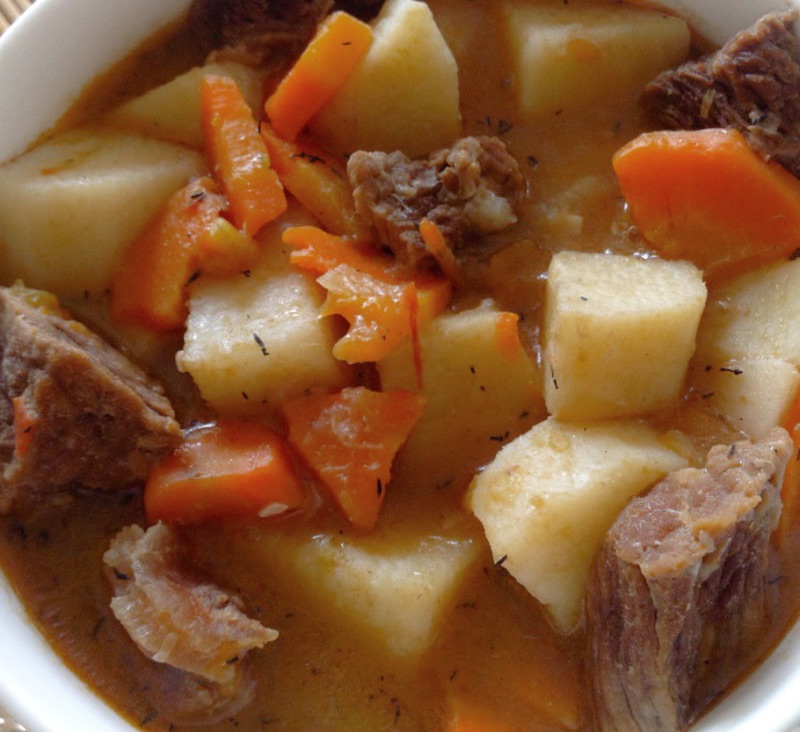
Ragout d’igname
Ragout d’igname is a yam stew popular in several West African nations, particularly Burkina Faso. The dish’s main components include yams, garlic, ginger, onions, carrots, peppers, and tomatoes. Ragout d’igname is normally seasoned merely with salt and pepper, and when the yam is mushy and the sauce thickens, it is ready to eat, preferably blistering hot.

Riz gras
This is a classic rice dish that includes an onion and tomato sauce. It’s a full dinner that’s accessible at most restaurants around Burkina Faso. Riz gras, or fat rice in French, is Burkina Faso’s national one-pot cuisine, consisting of white rice, tomato paste, and vegetables such as eggplants, carrots, onions, jalapeño peppers, and garlic simmered together in a thick rice stew and served with a few strands of raw onions on top.
If meat is used, it is browned at the start of the cooking procedure. The term comes from the fact that peanut oil is frequently utilized in the production of riz gras. Although the meal is not visually appealing, it is an excellent comfort food.

Babenda
Babenda is a traditional Burkinabe one-pot dish made with bitter greens such as spinach, kale, mustard greens, or swiss chard. The addition of fermented locust beans, known as dawadawa or soumbala, gives this meal a strong taste that is evocative of blue cheese.
In order to add protein to the meal, soumbala is often mashed with smoked or dried fish. The entire mixture is usually blended with rice to form babenda, a homogeneous mass of bitter greens, soumbala, rice, and fish.
What's the Travel Budget for Burkina Faso?
Flights
- Flights start at roughly $130 from nearby countries. Tickets however on average cost around $650 and can cost way more depending on which class and from which country you depart from.
Accommodation
- Nomad Backpacking style travelers can expect to spend around $110 for a week
- Budget travelers can expect to spend around $275 for a week
- Mid-range travelers can expect to spend around $450 for a week
- Luxury travelers can expect to spend around $1,120 for a week
Food Budget (Three meals and drinks)
- Nomad Backpacking style travelers can expect to spend around $10 per person per day
- Budget travelers can expect to pay around $16 per person per day
- Mid-range travelers on average would cost $20 to $35 per person per day
- Luxury travelers can expect to pay around $40 to $55 per person per day
Overall Budget Styles (Not including Flights, Tours, Transportation, or Car Rental)
- Nomad Backpacking style travelers can expect to spend roughly $200 for a week
- Budget travelers can expect to spend close to $390 for one person for a week
- Mid-range travelers can expect to spend approximately $720 for one person for a week
- Luxury travelers can expect to spend around $1,630 for one person for a week
Flights
- Flights start at roughly $130 from nearby countries. Tickets however on average cost around $650 and can cost way more depending on which class and from which country you depart from.
Accommodation
- Nomad Backpacking style travelers can expect to spend around $110 for a week
- Budget travelers can expect to spend around $275 for a week
- Mid-range travelers can expect to spend around $450 for a week
- Luxury travelers can expect to spend around $1,120 for a week
Food Budget (Three meals and drinks)
- Nomad Backpacking style travelers can expect to spend around $10 per person per day
- Budget travelers can expect to pay around $16 per person per day
- Mid-range travelers on average would cost $20 to $35 per person per day
- Luxury travelers can expect to pay around $40 to $55 per person per day
Overall Budget Styles (Not including Flights, Tours, Transportation, or Car Rental)
- Nomad Backpacking style travelers can expect to spend roughly $200 for a week
- Budget travelers can expect to spend close to $390 for one person for a week
- Mid-range travelers can expect to spend approximately $720 for one person for a week
- Luxury travelers can expect to spend around $1,630 for one person for a week
Flights
- Flights start at roughly $130 from nearby countries. Tickets however on average cost around $650 and can cost way more depending on which class and from which country you depart from.
Accommodation
- Nomad Backpacking style travelers can expect to spend around $110 for a week
- Budget travelers can expect to spend around $275 for a week
- Mid-range travelers can expect to spend around $450 for a week
- Luxury travelers can expect to spend around $1,120 for a week
Food Budget (Three meals and drinks)
- Nomad Backpacking style travelers can expect to spend around $10 per person per day
- Budget travelers can expect to pay around $16 per person per day
- Mid-range travelers on average would cost $20 to $35 per person per day
- Luxury travelers can expect to pay around $40 to $55 per person per day
Overall Budget Styles (Not including Flights, Tours, Transportation, or Car Rental)
- Nomad Backpacking style travelers can expect to spend roughly $200 for a week
- Budget travelers can expect to spend close to $390 for one person for a week
- Mid-range travelers can expect to spend approximately $720 for one person for a week
- Luxury travelers can expect to spend around $1,630 for one person for a week
Flights
- Flights start at roughly $130 from nearby countries. Tickets however on average cost around $650 and can cost way more depending on which class and from which country you depart from.
Accommodation
- Nomad Backpacking style travelers can expect to spend around $110 for a week
- Budget travelers can expect to spend around $275 for a week
- Mid-range travelers can expect to spend around $450 for a week
- Luxury travelers can expect to spend around $1,120 for a week
Food Budget (Three meals and drinks)
- Nomad Backpacking style travelers can expect to spend around $10 per person per day
- Budget travelers can expect to pay around $16 per person per day
- Mid-range travelers on average would cost $20 to $35 per person per day
- Luxury travelers can expect to pay around $40 to $55 per person per day
Overall Budget Styles (Not including Flights, Tours, Transportation, or Car Rental)
- Nomad Backpacking style travelers can expect to spend roughly $200 for a week
- Budget travelers can expect to spend close to $390 for one person for a week
- Mid-range travelers can expect to spend approximately $720 for one person for a week
- Luxury travelers can expect to spend around $1,630 for one person for a week
If you want to know what to pack, read this list below:
- This is a casual European country that can get extremely hot or too rainy, dress accordingly
- Raincoat or Light Waterproof Jacket
- Hiking Boots or Sturdy Sneakers (Shoes You Don’t Mind Getting Wet)
- Sunscreen
- Insect Protection – Repellent and Clothing
- Sunglasses and Sun Hat
- Water Shoes
- Beach Towels/Sarong
- Dry Bag
- Money Belt or Cross Bag
- Portable Medical Kit
- Flashlight or Headlamp
- Copies of your passport.
- Get all the needed vaccinations before traveling
- A power bank is a must in any travel.
- Always have some cash with you just in case there are no ATMs and if you are dealing with a business that solely accepts cash
- Get yourself an adapter for your gadgets
- 1 toothbrush
- 1 tube of toothpaste
- 1 razor
- 1 package of dental floss
- 1 small bottle of shampoo
- 1 small bottle of shower gel
- 1 towel
- Deodorant
- Band-Aids
- Hydrocortisone cream
- Antibacterial cream
- Earplugs
- Tylenol
- Hand sanitizer (germs = sick = bad holiday)
- A key or combination lock
- Zip-lock bags
- Plastic bags (great for laundry)
- Universal charger/adaptor
- LifeStraw (A water bottle with a purifier)
- 1 dry shampoo spray & talc powder
- 1 hairbrush
- Makeup you use
- Hairbands & hair clips
- Feminine hygiene products
Clothing For Boys
- 1 pair of jeans or khaki pants
- 1 pair of shorts
- 1 bathing suit
- 5 T-shirts
- 1 long-sleeved T-shirt
- 1 pair of flip-flops
- 1 pair of sneakers
- 6 pairs of socks
- 5 pairs of boxer shorts
Clothing For Girls
- 1 swimsuit
- 1 sarong
- 1 pair of stretchy jeans
- 1 pair of leggings
- 2-3 long-sleeve tops
- 2-3 T-shirts
- 3-4 spaghetti tops
- 1 light cardigan
Want to plan your own trip, here are some of the best resources that can help you
- Skyscanner – They search small websites and budget airlines that larger search sites tend to miss. They are hands down the number one place to start.
- Momondo – This is another favorite flight search engine because they search such a wide variety of sites and airlines. Always check here too.
- Booking.com – The best all-around booking site that constantly provides the most affordable and lowest rates. They have the widest selection of budget accommodation.
- Couchsurfing – This website allows you to stay on people’s couches or spare rooms for free. It’s a great way to save money while meeting locals who can tell you the ins and outs of their city. The site also lists events you can attend to meet people (even if you’re not staying with someone).
- Intrepid Travel – If you want to do group tours, go with Intrepid. They offer good small group tours that use local operators and leave a small environmental footprint.
- Grassroots Volunteering – For volunteering, Grassroots Volunteering compiles a list of good local volunteer organizations that keep the money within the community.
- Get Your Guide – Get Your Guide is a huge online marketplace for tours and excursions. They have tons of tour options available in cities all around the world, including everything from cooking classes, walking tours, street art lessons, and more! It has the world’s largest collection of things to do with more than 30,000 activities in 7500 destinations.
- SafetyWing – Safety Wing offers convenient and affordable plans tailored to digital nomads and long-term travelers. They have cheap monthly plans, great customer service, and an easy-to-use claims process that makes it perfect for those on the road.
- Trip Advisor: Check the reviews and then book your accommodation. TripAdvisor is where you go when you want to compare prices with multiple accommodation providers.
- VRBO: is the main search engine to use when you are looking for a home or apartment rental. It can sometimes be cheaper than hotels and it is the best way to stay in areas that offer a more local feel.
- Hostelworld: With one of the largest databases of hostels in the world, Hostelworld is the go-to site when you are looking for budget accommodation.
- Rome 2 Rio: If you want to see how to get somewhere by plane, train, bus, ferry, or car Rome2Rio lays it all out for you as well as related costs.
- World Nomads Insurance: When traveling you should always have travel insurance. We have found the best bang for your buck is by far World Nomads.
Final Thoughts on Burkina Faso
Burkina Faso has a complex and rich Burkinabé legacy that is seen across the nation, with its empire past, former occupations, beautiful and distinctive Islamic and orthodox landmarks, genuine hospitality, and breathtaking environment. Burkina Faso is thus a prime location to visit especially for those who seek an off-the-beaten-path adventure in an unfrequented country. Burkina Faso’s magnificence is wonderful, with its impressive national parks, wild resources, and breathtaking panoramas. Would you travel to Burkina Faso?
Have you visited Burkina Faso? Please share your thoughts in the comments section below.